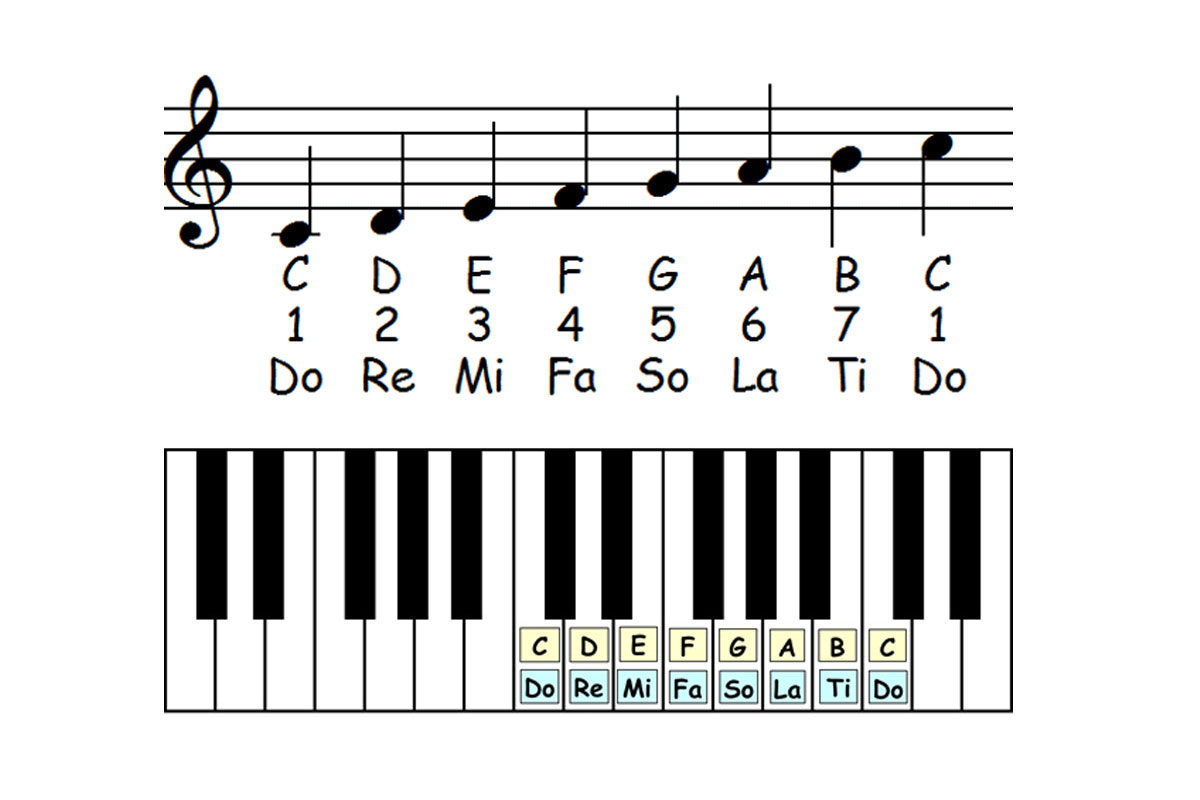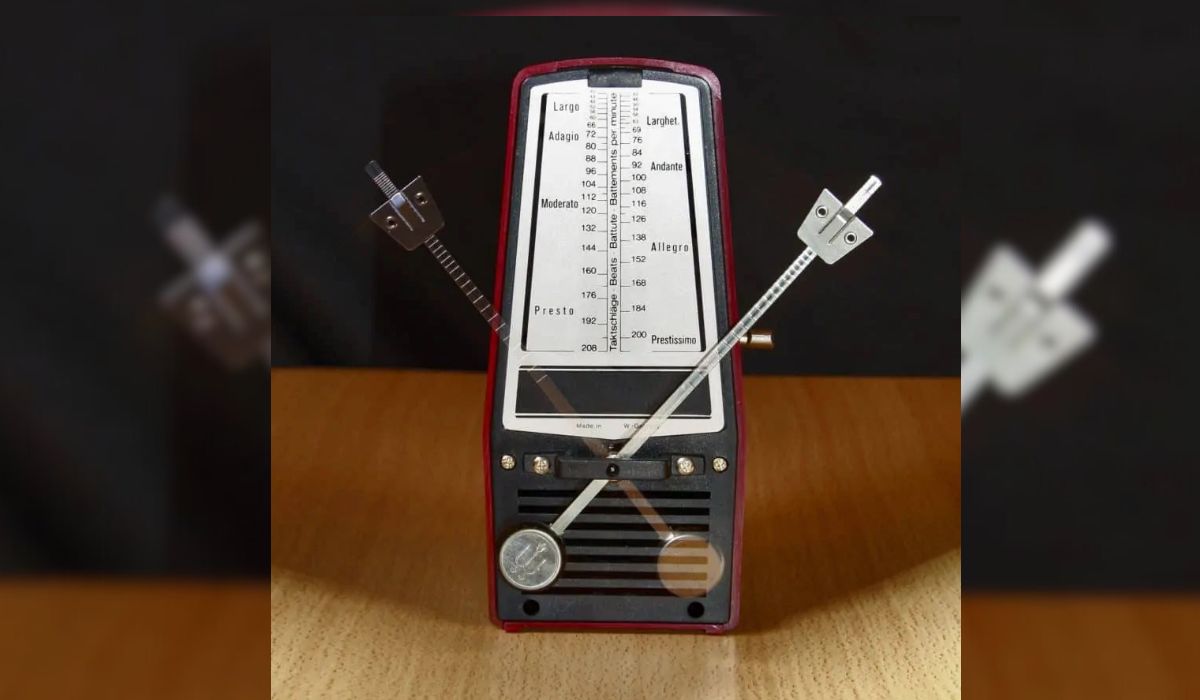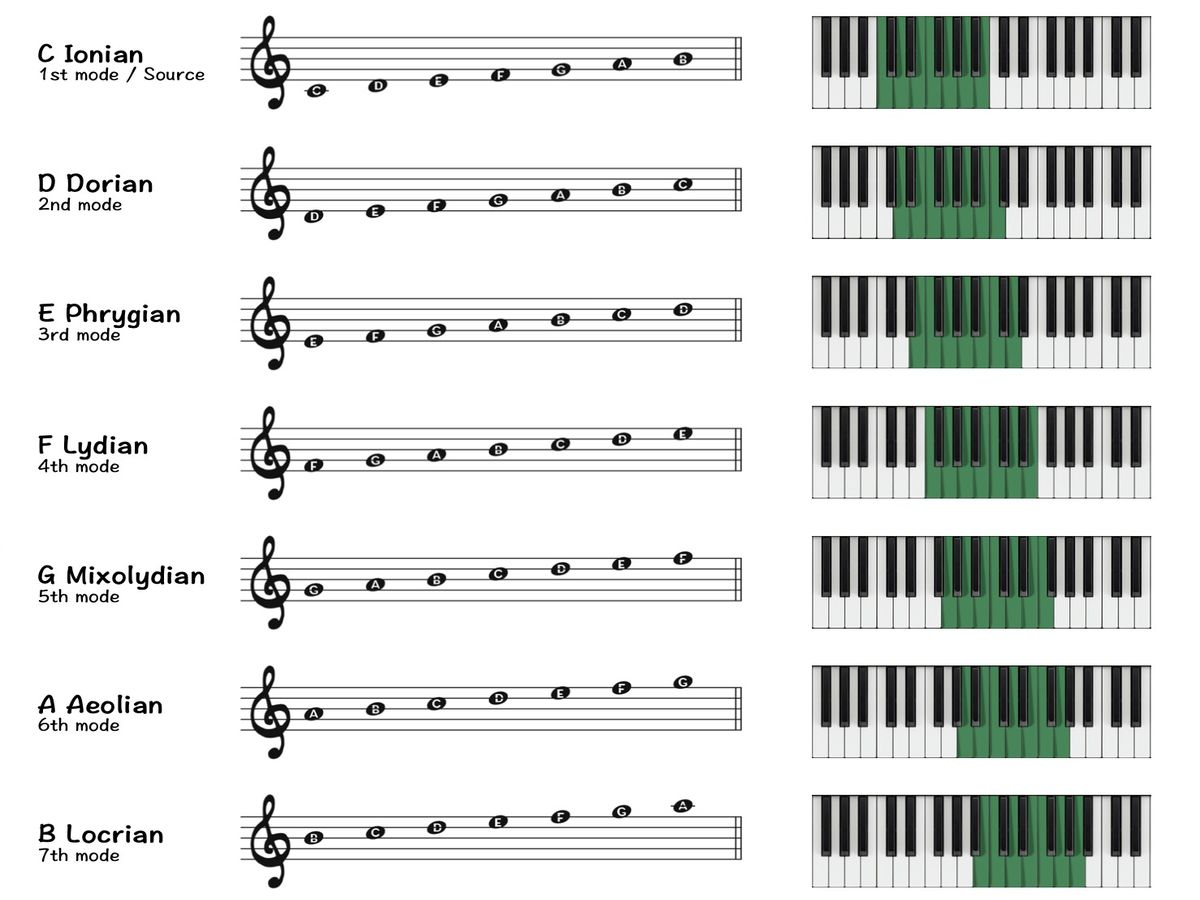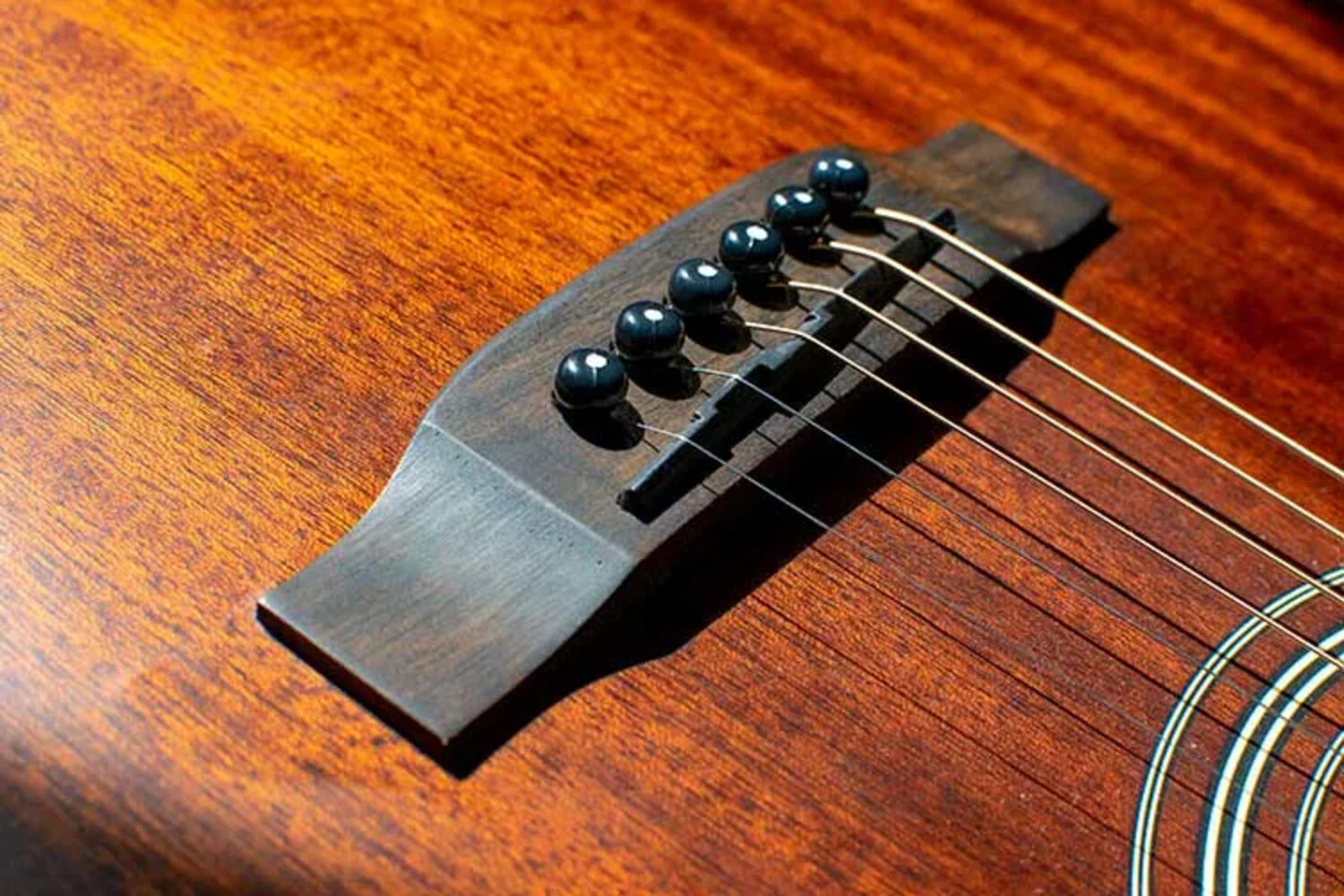Home>Instruments>Guitar>What Are Scales In Guitar


Guitar
What Are Scales In Guitar
Published: February 15, 2024
Learn about guitar scales, including how to play and use them in your music. Discover the different types of scales and improve your guitar skills today!
(Many of the links in this article redirect to a specific reviewed product. Your purchase of these products through affiliate links helps to generate commission for AudioLover.com, at no extra cost. Learn more)
Table of Contents
Introduction
Understanding the Fundamentals of Guitar Scales
When it comes to mastering the art of playing the guitar, understanding scales is a fundamental aspect that every aspiring guitarist should prioritize. Scales serve as the building blocks for creating melodies, improvising solos, and understanding the underlying structure of music. In the realm of guitar playing, scales are indispensable tools that empower musicians to express their creativity and emotions through the instrument.
As a guitarist, delving into the realm of scales opens up a world of musical possibilities. Whether you’re a beginner eager to grasp the basics or an experienced player seeking to expand your musical horizons, a solid understanding of guitar scales is crucial for honing your skills and developing your unique musical identity.
In this comprehensive guide, we will explore the essence of guitar scales, their significance in the realm of music, the various types of scales, and the popular scales that have left an indelible mark on the world of guitar playing. Furthermore, we will delve into effective strategies for practicing scales, allowing you to integrate them seamlessly into your musical repertoire.
Understanding Scales
At its core, a scale is a sequence of musical notes arranged in ascending or descending order based on a specific pattern of intervals. These intervals determine the unique sound and character of the scale, giving rise to a diverse range of musical flavors. In the context of guitar playing, scales serve as the foundational framework for creating melodies, improvising solos, and understanding the harmonic structure of songs.
One of the pivotal aspects of understanding scales is grasping the concept of intervals, which are the spaces between the notes. These intervals dictate the emotional quality and tonal color of the scale, ultimately shaping the mood and atmosphere of the music. By familiarizing yourself with intervals, you gain the ability to infuse your playing with depth and emotion, transcending mere technical proficiency to convey genuine musical expression.
Moreover, scales are not confined to a single position on the fretboard. Instead, they can be transposed and played across various octaves and regions of the guitar, offering a rich tapestry of sonic possibilities. This versatility empowers guitarists to explore different tonalities and experiment with diverse melodic patterns, fostering a deeper connection with the instrument and the music they create.
Understanding the role of scales in music also involves recognizing their significance in shaping musical genres and styles. Different scales evoke distinct emotions and cultural associations, playing a pivotal role in defining the sonic identity of various musical traditions. Whether it’s the evocative melodies of the blues scale or the exotic allure of the harmonic minor scale, each scale carries its own unique essence, enriching the musical landscape with its distinctive allure.
Importance of Scales in Guitar
Understanding the importance of scales in the realm of guitar playing is akin to unlocking the gateway to musical fluency and creative expression. Scales are the elemental language of music, and mastering them is indispensable for any guitarist aiming to elevate their playing to new heights.
One of the primary advantages of delving into scales is the enhancement of finger dexterity and coordination. By practicing scales, guitarists refine their ability to maneuver across the fretboard with precision and agility, laying the groundwork for seamless and fluid playing. This technical proficiency not only facilitates the execution of intricate musical passages but also fosters a deeper connection between the guitarist and their instrument.
Furthermore, scales serve as the raw material for crafting captivating melodies and improvising solos. By internalizing various scale patterns and their unique sonic characteristics, guitarists gain the tools to infuse their playing with emotion, nuance, and creativity. This proficiency in improvisation empowers musicians to express their musical ideas spontaneously, fostering a sense of artistic freedom and individuality.
Another compelling reason for embracing scales is their role in developing a comprehensive understanding of music theory. By studying scales, guitarists gain insights into the underlying harmonic structure of songs, enabling them to decipher chord progressions, comprehend key signatures, and navigate the intricacies of musical composition with confidence and proficiency.
Moreover, scales play a pivotal role in ear training, sharpening the guitarist’s ability to recognize and discern musical intervals, harmonies, and tonal relationships. This heightened musical perception cultivates a discerning ear, allowing guitarists to appreciate the nuances of music on a deeper level and enhancing their capacity for musical interpretation and expression.
Ultimately, the importance of scales in guitar cannot be overstated. They form the bedrock of musical proficiency, empowering guitarists to communicate their emotions, ideas, and stories through the evocative language of music.
Types of Scales in Guitar
Within the realm of guitar playing, an array of scales enriches the musical landscape, each imbued with its own distinct character and sonic allure. Understanding the various types of scales is essential for broadening your musical palette and infusing your playing with diverse tonal colors and emotional nuances.
One of the most prevalent scales in guitar music is the major scale, renowned for its bright, uplifting sound that underpins countless melodies and compositions across various genres. Characterized by its sequence of whole and half steps, the major scale embodies a sense of optimism and positivity, making it a cornerstone of musical expression.
Conversely, the minor scale exudes a melancholic and introspective aura, captivating listeners with its emotive resonance. This scale serves as a foundation for conveying poignant and introspective musical narratives, evoking a spectrum of emotions ranging from wistful longing to profound sorrow.
Another noteworthy scale in the guitarist’s arsenal is the blues scale, revered for its soulful and expressive qualities. Rooted in the rich tradition of blues music, this scale infuses compositions with a raw, gritty edge, allowing guitarists to channel the essence of blues legends and imbue their playing with visceral emotion and authenticity.
Beyond these foundational scales, the pentatonic scale stands as a cornerstone of musical improvisation and melodic exploration. With its five-note structure, the pentatonic scale empowers guitarists to craft captivating solos and melodies, offering a versatile framework for spontaneous musical expression and creative freedom.
Furthermore, the harmonic minor scale exudes an exotic and enigmatic allure, infusing compositions with a sense of mystique and intrigue. Widely utilized in various musical traditions, this scale captivates listeners with its evocative tonalities, adding a touch of sophistication and allure to musical compositions.
These are just a few examples of the diverse array of scales that enrich the sonic tapestry of guitar music. By acquainting yourself with these scales and their unique characteristics, you embark on a musical journey brimming with creative possibilities and expressive potential.
Popular Scales in Guitar
Within the realm of guitar playing, several scales have left an indelible mark on the musical landscape, captivating audiences and inspiring generations of musicians. These popular scales not only serve as foundational pillars of musical expression but also embody the rich heritage and diverse traditions of guitar music.
The major scale stands as a cornerstone of musical composition, revered for its bright and uplifting character. Its timeless appeal has cemented its status as a fundamental element in crafting melodies and harmonies, making it an essential scale for guitarists across genres and styles. Whether evoking feelings of joy and exuberance or conveying a sense of serenity and contemplation, the major scale remains a versatile and indispensable tool for musical expression.
Conversely, the minor scale has enraptured listeners with its emotive depth and introspective allure. From hauntingly beautiful ballads to searing, impassioned solos, the minor scale serves as a conduit for expressing a myriad of emotions, ranging from melancholy and longing to profound introspection. Its evocative resonance has solidified its status as an indispensable component of musical storytelling and emotional expression.
Another iconic scale that has permeated the fabric of guitar music is the pentatonic scale. Renowned for its versatility and melodic potency, the pentatonic scale empowers guitarists to weave captivating solos and melodies, infusing compositions with an infectious sense of groove and expression. Its widespread prevalence across diverse musical genres underscores its universal appeal and enduring relevance in the realm of guitar playing.
The blues scale stands as a testament to the raw, emotive power of guitar music, embodying the soulful essence of the blues tradition. Infused with a gritty, impassioned quality, the blues scale enables guitarists to channel the spirit of blues legends, imbuing their playing with raw emotion and authenticity. Its expressive potential and timeless resonance have etched it into the annals of musical history, shaping the sonic identity of blues and rock music.
Furthermore, the harmonic minor scale captivates listeners with its enigmatic allure and exotic tonalities. Its distinctive sound infuses compositions with a sense of mystique and sophistication, adding a touch of intrigue to musical narratives. Whether weaving intricate melodies or evoking a sense of drama and intensity, the harmonic minor scale enriches guitar music with its evocative and alluring qualities.
These popular scales embody the essence of guitar music, serving as conduits for emotional expression, creative exploration, and musical storytelling. By embracing these scales, guitarists embark on a captivating journey of sonic discovery and artistic expression.
How to Practice Scales in Guitar
Mastering scales on the guitar demands a combination of disciplined practice, creative exploration, and a strategic approach to skill development. By integrating effective practice techniques into your routine, you can elevate your proficiency in scales and harness their full potential as tools for musical expression and improvisation.
Begin by familiarizing yourself with the fundamental scale patterns, starting with the major and minor scales. Practice these scales in different positions on the fretboard, gradually building muscle memory and fluency in transitioning between notes. As you internalize these patterns, focus on achieving evenness in tone and articulation, ensuring that each note resonates clearly and distinctly.
Furthermore, incorporating scale exercises into your daily practice regimen can significantly enhance your dexterity and finger strength. Utilize techniques such as alternate picking, legato, and string skipping to imbue your scale practice with rhythmic precision and dynamic variation. By diversifying your approach to scale exercises, you cultivate a versatile skill set that enriches your playing and fosters technical prowess.
Moreover, practicing scales in a musical context is essential for integrating them seamlessly into your repertoire. Experiment with improvising melodies and solos using the scales you’ve learned, allowing your creativity to flourish within the framework of the scale patterns. This approach not only nurtures your improvisational skills but also instills a deeper understanding of the melodic potential inherent in each scale.
Utilizing backing tracks and jamming with other musicians provides invaluable opportunities to apply scales in a live musical setting. Engaging in collaborative musical experiences fosters adaptability, enhances your ability to navigate different keys and tempos, and cultivates a keen sense of musical intuition. These interactions nurture your capacity for spontaneous musical expression and enable you to harness the full emotive potential of scales within a musical ensemble.
Additionally, recording and analyzing your practice sessions can offer valuable insights into your progress and areas for improvement. By listening back to your performances, you can identify nuances in your playing, refine your phrasing, and pinpoint areas where technical refinement is needed. This reflective practice empowers you to refine your approach to scale playing and cultivate a discerning ear for musical expression.
Ultimately, integrating focused, purposeful practice into your journey with scales is pivotal for unlocking their expressive potential and honing your musical identity as a guitarist. By embracing a holistic approach to scale practice, you embark on a transformative musical odyssey, enriching your playing and nurturing your artistic growth.
Conclusion
Embarking on a journey into the realm of guitar scales unveils a world of musical discovery, creative expression, and artistic growth. By delving into the essence of scales, aspiring guitarists cultivate a profound understanding of musical structure, melodic exploration, and the boundless potential for emotive storytelling through the instrument.
Understanding the fundamental role of scales in guitar playing empowers musicians to harness their expressive potential, fostering a deep connection with the instrument and the music they create. Scales serve as the building blocks for crafting captivating melodies, improvising soul-stirring solos, and unraveling the harmonic intricacies of music, laying the groundwork for a rich tapestry of sonic possibilities.
Moreover, the diverse array of scales in the guitarist’s arsenal embodies a spectrum of emotions, tonal colors, and cultural influences, enriching the musical landscape with their distinctive allure. From the timeless resonance of the major scale to the soulful essence of the blues scale and the enigmatic allure of the harmonic minor scale, each scale encapsulates a unique musical identity, inviting guitarists to embark on a journey of sonic exploration and creative expression.
Practicing scales on the guitar transcends mere technical proficiency, nurturing a holistic approach to musical growth and artistic development. By integrating disciplined practice, creative exploration, and a strategic mindset, guitarists elevate their proficiency in scales, honing their skills and cultivating their unique musical voice.
Ultimately, the art of practicing scales on the guitar is a transformative odyssey, imbued with the potential for self-discovery, creative expression, and the timeless allure of musical storytelling. As guitarists embrace the language of scales, they embark on a captivating journey of sonic discovery, enriching their musical repertoire and crafting evocative narratives through the expressive language of music.
Thus, the realm of guitar scales stands as a testament to the enduring power of musical expression, inviting guitarists to embark on a captivating odyssey of sonic exploration, artistic growth, and the timeless resonance of musical storytelling.











